Review Article Open Access
Imaging Features and Clinical Significance of the Acromion Morphological Variations
| Guishan Gu* and Ming Yang Yu | |
| Department of Bone and Joint Surgery, 1st First Hospital of Jilin University Changchun, P.R.C. 130021, China | |
| Corresponding Author : | Guishan Gu Department of Bone and Joint Surgery 1st First Hospital of Jilin University Changchun P.R.C. 130021, China E-mail: guguishan001@163.com |
| Received December 17, 2012; Accepted February 13, 2013; Published February 15, 2013 | |
| Citation: Gu G, Yu MY (2013) Imaging Features and Clinical Significance of the Acromion Morphological Variations. J Nov Physiother S2:003. doi: 10.4172/2165-7025.S2-003 | |
| Copyright: © 2013 Gu G, et al. This is an open-access article distributed under the terms of the Creative Commons Attribution License, which permits unrestricted use, distribution, and reproduction in any medium, provided the original author and source are credited. | |
Visit for more related articles at Journal of Novel Physiotherapies
Abstract
The pathogenesis of rotator cuff tears is complex and chaos; however, the rotator cuff tears have been related to the morphology of the acromion. We named those variations of the acromial morphological as “Congenital and Osteal Etiological Factors”, which include the shape, lateral extension, the angle between the undersurface of the acromion and the glenoid and the distance from acromion to humeral head. The critical area for degenerative tendinitis and tendon rupture was centered in the supraspinatus tendon and the anteroinferior of acromion was the main region of impingement. According to this theory, Neer designed the anterior acromioplast in 1972. Bigliani et al. analyzed the shape of the acromion on lateral radiographs and found a higher prevalence of rotator cuff tears in patients with a hooked [type-III] acromion than in individuals with a curved [type-II] or a flat [type-I] acromion. The concept of Lateral Acromion Angle [LAA] was defined by Banas et al. at first, which was defined as the slope of the inferior surface of the acromion relative to the scapular glenoidplane. The acromiohumeral interval which was measured as the smallest distance from the inferior surface of the acromion to the superior aspect of the humerus. Several soft tissues pass through this arch, such as infraspinatus and supraspinatus and subacromial bursa. The concept of Acromion Index [AI] was defined by Nyffeler et al. at first, which could directly describe the lateral extension degrees of acromion. It could also be considered as the coverage degree of acromion onto the subacromial tissue.
| Keywords |
| Infraspinatus; Subacromial bursa; Acromion index |
| Techniques for Taking the Views |
| True anteroposterior views |
| It is necessary to take the true anteroposterior radiograph that the scapular plane should be parallel to the X-ray cassette. Since the scapular plane rest at an angle of approximately 45 degrees to the coronal plane, the patient needs to rotate the body until the scapular plane is parallel to the X-ray cassette (Figure 1). The patient needs the forearm to be at the side of the body without abduction and with the palm facing forewards. On this position, the views could show clearly the space between the glenoid and the humeral head, the middle part of clavicle is overlaped; the fringe of the glenoid is in a line [1-6]. |
| Anteroposterior views |
| If the coronal plane of the thorax parallel to the X-ray cassette, the anteroposterior view of the glenohumeral joint is obtained. In this views, the humeral head to be overlapping with the glenoid, and the outline of the glenoid is oval but not is line, the clavicle is unfolded (Figure 2). |
| Lateral outlet views |
| The position of the shoulder is usually held in internal rotation. The X-ray beam parallel to the scapular plane, is directed to the cassette. On the lateral outlet view, the form of the scapular is a “Y” shape. And we can see the lateral surface of the acromion (Figure 3). Lateral outlet view of the glenohumeral joint show the humeral head well centered around the glenoid fossa. |
| Types of Acromion |
| Bigliani [2] analyzed the morphologic condition of the acromion on lateral outlet view radiographs and divided it into three types. A type I [flat] acromion had a flat outline. A type II [curved] acromion had a gentle curve. A type III [hooked] acromion had an abrupt change in the radius of curvature of the cortical undersurface (Figure 4). |
| Acromion index |
| The concept of Acromion Index [AI] was defined by Nyffeler et al. first [6], which could directly describe the lateral extension degrees of acromion. It could also be considered as the coverage degree of acromion onto the subacromial tissue. A true anteroposterior radiograph of the shoulder is necessary in measuring the acromion index. The line “a” connected the superior and inferior osseous margins of the glenoid cavity and represented the plane of the glenoid surface. The tangent line of the lateral acromion is line ‘b’. GA is the distance from line ‘a’ to line ‘b’. GH is the distance from line ‘a’ to line ‘c’, which is the lateral tangent line of proximal humerus. The relationship between these two distances [GA/GT] was calculated and termed as the Acromion Index [AI] (Figure 5). |
| Acromion Coverage Index (ACI) |
| The concept of Acromion Coverage Index [ACI] was defined by Torrens et al. at first [7]. A true anteroposterior view was obtained for each subject. To measure the acromial coverage of the humeral head, line “a” was been found which was tangential to the superior and inferior osseous margins of the glenoid cavity as same as AI in such a way that the perpendicular to this line to the lateral end of the acromion was designated as the Acromial Distance [AD]. The humeral head was considered as a circle, and the diameter perpendicular to the line “a” was identified as the Humeral Distance (HD). The ratio between Acromial Distance and Humeral Distance [AD/HD] was called the acromial coverage index (Figure 6). |
| Acromiohumeral interval |
| The true anteroposterior radiograph of the shoulder was used to measure the acromiohumeral interval [4-5]. The inferior surface of the acromion was showing in a sclerotic line on the AP radiograph. It was the first step to measure the acromiohumeral intervals that confirm the sclerotic line which was represent the “roof” of the acromion. The measurement consisted of drawing two parallel lines and measuring the distances between those lines. The line “a” was placed upon the sclerotic line, to represent the inferior surface of the acromion. The line “b” was drawn parallel to the line “a” and was tangential to the most superior point of the humeral head. The distance between line “a” and line “b” is acromiohumeral interval (Figure 7). |
| Lateral Acromion Angle (LAA) |
| A special oblique coronal MRI [1.5 tesla or 3.0 tesla] was used to measure lateral acromion angle [3]. There was no conventional angle or range but the random oblique coronal plane which cut just posterior to acromioclavicular joint and parallel to the scapular plane. On this radiograph, the supraspinatus muscle and tendon must be seen passing bellow the acromion. The line “a” was parallel to the furthest lateral margin of the superior and inferior bony glenoid. The line “b” was parallel to the acromion undersurface. The angle [LAA] was determined by the intersection of those lines. Nyffeler et al. proposed that there may be a correlation between the lateral acromion angle and the acromion index on the last part of his paper: “both parameters use the glenoid plane as a reference” [6] (Figure 8). |
| Types of Acromion According to Neer |
| Neer [1] pointed that the critical area for degenerative tendinitis and tendon rupture is centered in the supraspinatus tendon, and identified the anteroinferior of acromion is the main region of impingement. According to this theory, Neer designed the anterior acromioplast. However, he did not observe the variation of acromion. Bigliani et al. [2] defined the classification of the acromion and found that type III [hooked] acromions had a higher incidence of rotator cuff tears than type I [flat] or type II [curved] acromions. Nicholson et al. evaluated 420 scapulas to determine the acromial morphologic condition [8]. They found that the distribution of acromial morphologic types was type I, [flat] 32%, type II [curved], 42%, and type III [hooked], 26%. Generally speaking, this classification was used to the predisposing factors to tear off the rotator cuff in the outpatient. |
| Acromion index |
| Nyffeler et al. [6] found that the average acromion index [and standard deviation] was 0.73 ± 0.06 in the shoulders with a fullthickness tear, 0.60 ± 0.08 in those with osteoarthritis and an intact rotator cuff, and 0.64 ± 0.06 in the asymptomatic, normal shoulders with an intact rotator cuff. Kim et al. suggest that a high AI can be one of the associated factors for progression to large-to-massive rotator cuff tears in a rotator cuff disease [9]. Howerer, Kircher et al. did not find a significant association between a low acromion index and typical signs of osteoarthritis at the shoulder [10]. The theoretical concept of a small acromion index associated with the development of osteoarthritis of the shoulder is not supported. Miyazaki et al. suggest that the acromion index can be used as a predictive factor for RCTs in the Brazilian population but not in the Japanese population [11]. |
| Lateral Acromion Angle (LAA) |
| Banas et al. suggests that a significant correlation between the lateral acromion angle and underlying rotator cuff changes as determined by means of MRI [3]. For the 100 MRI studies of the glenohumeral joints were selected in Banas et al.’s study. There was a statistically significant correlation seen between the decrease of lateral acromion angle and increased risk of rotator cuff disease. Eight shoulders which were with a full-thickness rotator cuff tears had lateral acromion angle less than or equal to 70°. The average lateral acromion angle was measured in 80° in the control group of 25 patients without symptoms. However, some variations were found in the inclination of the scapula glenoid [12-15], and the lateral acromion angle is an absolute value but is not a relative value, so its value depends upon the morphology of the acromion and the scapula glenoid. |
| The acromiohumeral interval |
| The normal cromio humeral interval was considered as 7 to 14 mm [16-18]. Narrowing of the distance indicate the superior migration of humeral head, which has been associated with the tearing of the rotator cuff tendons, especially the supraspinatus. The tearing of supraspinatus bring about biomechanical dysfunction of the glenohumeral joint, because the supraspinatus play an important role in pressing the humeral head. Hiroshi Minagawa et al. confirm that the function of pressing would be weaken, because tear or fatty degeneration was present in one or more rotator cuff muscles that they cannot counteract the deltoid. The increase of the AHD indicating subluxation or luxation of shoulder. |
| The extrinsic theory of rotator cuff disease was proposed by many scholars who believed that the acromion caused mechanical attrition to the aponeurosis supraspinatus. We named those variations of the acromial morphology is “Congenital and Osteal Etiological Factors” which play subsidiary roles in diagnosing the rotator cuffinjury. This study suggests that those “Congenital and Osteal Etiological Factors” may be a useful adjuvant in the evaluation of patients who thought to have or to be at risk for rotator cuff disease. Hence the introduction of those concepts is necessary. However, some factors may exist in a same patient. Therefore, a comprehensive analysis is necessary for surgeon to analyse the patients. |
References
- Neer CS 2nd (1972) Anterior acromioplasty for the chronic impingement syndrome in the shoulder: a preliminary report. J Bone Joint Surg Am 54: 41-50.
- Bigliani LU, Morrison DS, April EW (1986) The morphology of the acromion and its relationship to rotator cuff tears. Orthop Trans 10: 216.
- Banas MP, Miller RJ, Totterman S (1995) Relationship between the lateral acromion angle and rotator cuff disease. J Shoulder Elbow Surg 4: 454-461.
- Thompson MD, Landin D, Page PA (2011) Dynamic acromiohumeral interval changes in baseball players during scaption exercises. J Shoulder Elbow Surg 20: 251-258.
- Werner CM, Conrad SJ, Meyer DC, Keller A, Hodler J, et al. (2008) Intermethod agreement and interobserver correlation of radiologic acromiohumeral distance measurements. J Shoulder Elbow Surg 17: 237-240.
- Nyffeler RW, Werner CM, Sukthankar A, Schmid MR, Gerber C (2006) Association of a large lateral extension of the acromion with rotator cuff tears. J Bone Joint Surg Am 88: 800-805.
- Torrens C, L├?┬│pez JM, Puente I, C├?┬íceres E (2007) The influence of the acromial coverage index in rotator cuff Tears. J Shoulder Elbow Surg 16: 347-351.
- Nicholson GP, Goodman DA, Flatow EL, Bigliani LU (1996) The acromion: morphologic condition and age-related changes. A study of 420 scapulas. J Shoulder Elbow Surg 5: 1-11.
- Kim JR, Ryu KJ, Hong IT, Kim BK, Kim JH (2012) Can a high acromion index predict rotator cuff tears? Int Orthop 36: 1019-1024.
- Kircher J, Morhard M, Gavriilidis I, Magosch P, Lichtenberg S, et al. (2010) Is there an association between a low acromion index and osteoarthritis of the shoulder? Int Orthop 34: 1005-1010.
- Miyazaki AN, Itoi E, Sano H, Fregoneze M, Santos PD, et al. (2011) Comparison between the acromion index and rotator cuff tears in the Brazilian and Japanese populations. J Shoulder Elbow Surg 20: 1082-1086.
- Wong AS, Gallo L, Kuhn JE, Carpenter JE, Hughes RE (2003) The effect of glenoid inclination on superior humeral head migration. J Shoulder Elbow Surg 12: 360-364.
- Oosterom R, Rozing PM, Bersee HE (2004) Effect of glenoid component inclination on its fixation and humeral head subluxation in total shoulder arthroplasty. Clin Biomech (Bristol, Avon) 19: 1000-1008.
- Churchill RS, Brems JJ, Kotschi H (2001) Glenoid size, inclination, and version: an anatomic study. J Shoulder Elbow Surg 10: 327-332.
- Codsi MJ, Bennetts C, Gordiev K, Boeck DM, Kwon Y, et al. (2008) Normal glenoid vault anatomy and validation of a novel glenoid implant shape. J Shoulder Elbow Surg 17: 471-478.
- Cotton RE, Rideout DF (1964) Tears of the humeral rotator cuff; a radiological and pathological necropsy survey. J Bone Joint Surg Br 46: 314-328.
- Golding FC (1962) The shoulder--the forgotten joint. Br J Radiol 35: 149-158.
- Weiner DS, Macnab I (1970) Superior migration of the humeral head. A radiological aid in the diagnosis of tears of the rotator cuff. J Bone Joint Surg Br 52: 524-527.
Figures at a glance
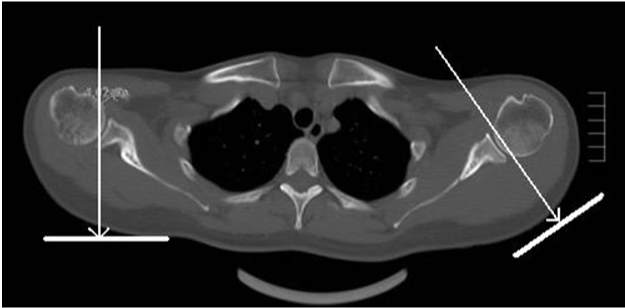 |
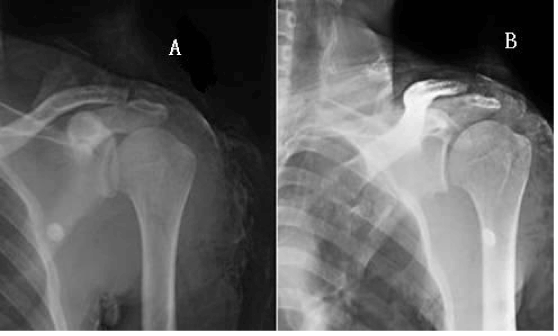 |
 |
 |
| Figure 1 | Figure 2 | Figure 3 | Figure 4 |
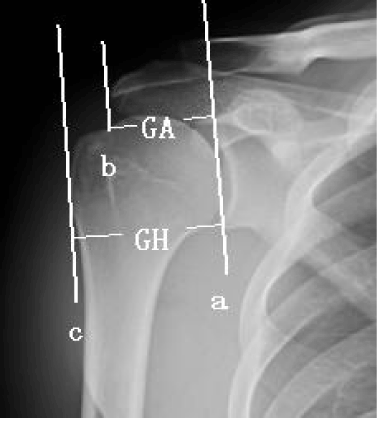 |
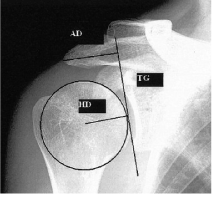 |
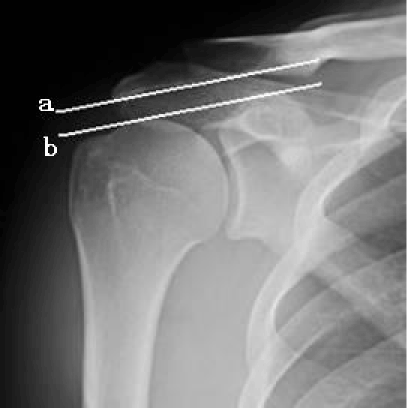 |
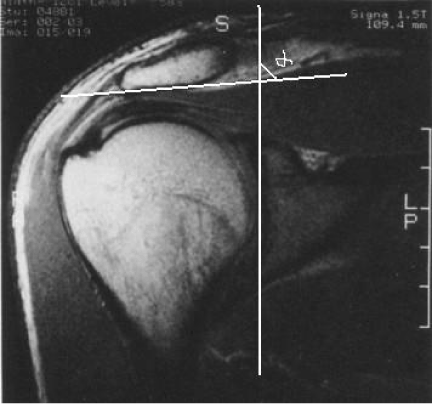 |
| Figure 5 | Figure 6 | Figure 7 | Figure 8 |
Relevant Topics
- Electrical stimulation
- High Intensity Exercise
- Muscle Movements
- Musculoskeletal Physical Therapy
- Musculoskeletal Physiotherapy
- Neurophysiotherapy
- Neuroplasticity
- Neuropsychiatric drugs
- Physical Activity
- Physical Fitness
- Physical Medicine
- Physical Therapy
- Precision Rehabilitation
- Scapular Mobilization
- Sleep Disorders
- Sports and Physical Activity
- Sports Physical Therapy
Recommended Journals
Article Tools
Article Usage
- Total views: 15544
- [From(publication date):
specialissue-2013 - Apr 03, 2025] - Breakdown by view type
- HTML page views : 10929
- PDF downloads : 4615
